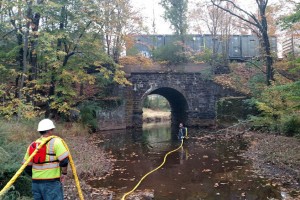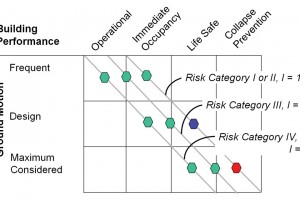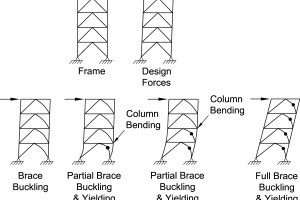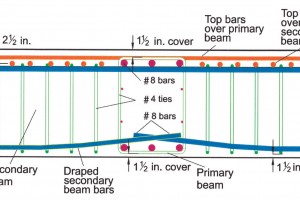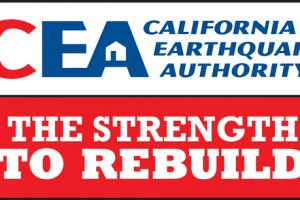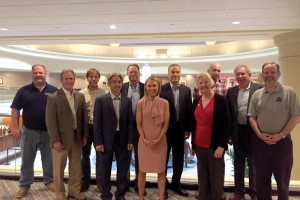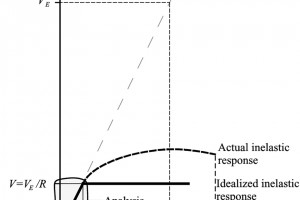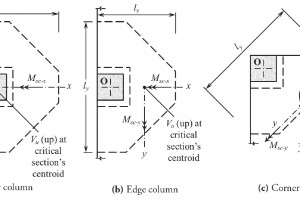STRUCTURE published a series of three articles in 2017 written by the Structural Engineering Engagement and Equity (SE3) Committee of the Structural Engineers Association of Northern California (SEAONC). These articles presented the results of a 2016 nationwide survey of engineers on the current conditions in the workplace about both engagement (broadly defined as satisfaction) and equity (broadly defined as fairness) and offered ideas for improved career development, retention, pay and benefits, access to opportunities, and work-life-balance. STRUCTURE has also published articles on the importance of mentoring and how to do it effectively (see Anderson, April 2018, and Grogan and Anesta, May 2014). …
Review Category : Articles
How Can We Better Utilize Limited Resources?
Bridge inspection frequency is mandated by the Federal Highway Administration (FHWA) metrics in their National Bridge Inspection Standards (NBIS) and the Code of Federal Regulations. The mandate on a regular frequency of inspection is how we ensure safety. That said, we operate under the current reality of limited resources. …
I have just returned from the American Council of Engineering Companies (ACEC) Annual Meeting and the Council of American Structural Engineers (CASE) Executive Committee Meeting in Washington, D.C. The conference marks the start of my two-year term as Chair of CASE. Given my new role, I reflected upon the time I invest in professional activities. These activities always make me feel invigorated and energized about our profession. Energy and passion can come from several different areas; why choose professional activities? …
Part 1
Articles recently appearing in major newspapers and features run on other media outlets have called into question the seismic performance of buildings designed using U.S. seismic codes and standards. The primary criticism appears to be that, while the codes and standards prevent the collapse of buildings in strong earthquakes and even provide life safety by allowing people to evacuate safely, they do not ensure the continued functioning of the buildings or the community. …
As the building industry forges ahead with technology and innovation, designers are encouraged to develop structures that perform as never before possible. Particularly in zones of high seismic activity, structures with large open spaces and high ceiling heights may not have seemed practical before the introduction of systems such as multi-tiered braced frames (MTBF). However, specific requirements for designing these MTBF systems are now defined in the Seismic Provisions for Structural Steel Buildings, ANSI/AISC 341-16, referred to as the 2016 AISC Seismic Provisions. This provides support both for these structures and for the seismic design industry. …
Part 2: Beams
This article is the second in a series on recommended reinforcement details for cast-in-place concrete construction. The first article, on Two-Way Slabs, ran in the June 2019 issue of STRUCTURE. …
Providing Residential Earthquake Insurance and Mitigation Programs to the State of California
The 1984 California Mandatory Offer Law required insurers to offer earthquake insurance as a condition of participating in the California residential insurance market. After suffering unprecedented insured losses from the 1994 Northridge earthquake, almost all California residential insurers stopped selling homeowner’s insurance throughout the state. California’s legislature stepped in with a solution in 1996 by creating the California Earthquake Authority (CEA), a “public instrumentality” of the state. Through its participating insurers, the CEA provides more than 66% of the residential earthquake insurance market in California. However, nearly 90% of California homeowners do not have earthquake insurance. With a strategic plan to Educate, Mitigate, and Insure Californians, the CEA endeavors to change that. …
The CASE, NCSEA, and SEI leadership announce that the three organizations have jointly endorsed the Vision for the Future of Structural Engineering. The endorsement is the result of a new Memorandum of Understanding that was signed in 2017 by all three organizations to work collaboratively for “…the betterment of the structural engineering profession…” …
Part 1: Seismic Drift
This article provides an overview of the Provisions in ASCE 7-16, Minimum Design Loads for Buildings and Other Structures, for the determination of seismic drift. The article covers several factors of drift computations, including the fundamental period, scaling modal drift obtained from modal response spectrum analysis, the seismic design base shear, torsional irregularities in structures, and the significance of P-delta effects. It also addresses the effects of elastic lateral deflections of the floor plate, and how to account for inelastic drift of a structure using a deflection amplification factor, and the allowable drifts for different types of seismic forces resisting systems and the risk categories. All section references and equation numbering are from ASCE 7-16. …
This article presents an alternative method for designing concrete flat slabs subjected to flexure-induced punching. The design method meets the requirements of ACI 318-14, Building Code Requirements for Structural Concrete and Commentary, Canadian Standard CSA A23.3-14, Design of Concrete Structures, and recommendations of ACI 421.1R-08, Guide to Shear Reinforcement for Slabs, and ACI 421.2R-10, Guide to Seismic Design of Punching Shear Reinforcement in Flat Plates. The flexural reinforcement above the columns in two orthogonal directions should not be less than a calculated minimum amount to resist flexure-induced punching. Insufficient flexural reinforcement would induce wide flexure cracks extending deep in the slab thickness and, if these cracks joined a shear crack, a punching failure would result. …


